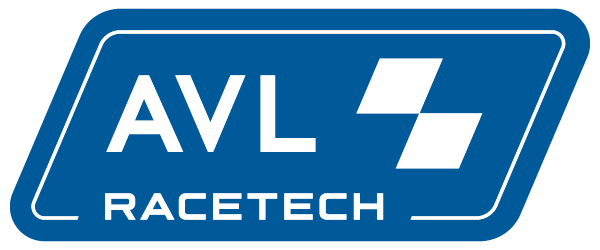Is F1 becoming a minority sport?
According to BBC correspondent Andrew Benson on the BBC website posted on 3 March, Formula 1 is being reinvented – some might say revolutionised – and if it’s a success, it will lead to closer, more competitive and more exciting races.
It follows an extensive interview that he had with Pat Symonds, Formula 1’s technical director who is leading research into the new-look F1 car from 2021. As Benson reports, it is all about the downforce generated by a Formula 1 car and the effect it has on the following car. As he reports, a 2018 F1 car following another car within 10 metres would lose as much as half of its total downforce, so it is literally physically impossible for that car to keep up.
Over the last few decades, F1 aero research has focused on what is known as vortex-based aerodynamics, in contrast to other race series such as IndyCars and World Endurance that have retained underfloor aerodynamics to a greater or lesser extent, something that the drivers prefer.
As Benson quotes Symonds: “The whole research is about the effect on the car that’s following, and our aim right through the project is to try to present air to the following car that allows it to produce a level of downforce that’s close to it being in free air.”
The current problem is that the wake is low down and creates a low-pressure area directly behind a car, and the car behind needs high-pressure air to generate its downforce. The F1 group therefore needed to find a way to make the wake sit higher. However, Symonds is very positive, saying they have found “a remarkable improvement”.
In 2021 F1 cars will be generating their downforce in a completely different way to now with something called the higher wake where the airflow is up-washed over the top of the following car. “It’s never going to be the same as it is in free air, but we’re just trying to get as close as we can to that. When conditions are good, if we can ensure they are not broken down, then we’ve made a difference of many tens of per cent of performance of the following car,” says Symonds.
Another factor that Symonds is taking into account is the 18” wheel that will come into F1 in 2021. “The tyres and the wheels are the dirtiest area of the car, they cause huge disruption in the airflow,” said Formula 1 motorsport boss Ross Brawn at a technical seminar before the Singapore Grand Prix last September. “We are starting to look at devices that can stabilise the flow as it comes of the wheel. It’s maturing as we go along.”
Meanwhile, for this season, a few aero tweaks have been introduced with the cars featuring a wider, higher – and much simplified – front wing with its width increased by 200mm, its height by 20mm, and it has moved forward by 25mm. The intention is to help chasing drivers follow the car in front more closely, and in turn increase the possibility of overtaking.
Furthermore, complex endplates that outwash airflow around the front tyres are banned. Instead, much simpler endplates mean almost the full width of the wing is devoted to direct downforce generation.
The wing’s added height further enhances its power and make it less sensitive to stall, so drivers area less likely to suddenly lose front-end grip when they close up on another car. The multiple under-wing strakes seen on 2018 cars are now limited to two each side, meaning more of the airflow is fed to the underbody. This is less sensitive to aerodynamic disturbance and so creates a less choppy ‘wake’ for a following driver to deal with.
While Symonds is spearheading the technical approach to make racing far closer and allowing for overtaking, there are serious rumblings in the background about Liberty Media’s control and understanding of the sport.
The value of Formula 1
On 28 February, Christian Sylt wrote for forbes.com an insight into the many problems afflicting Liberty Media and its involvement in Formula 1. As he notes, over the past eight months FWONK, with which it is listed on NASDAQ, has lost 19.8% of its value to close at the end of February at $31,which is less than its price in December 2016 before the F1 acquisition closed. It is far off the $47 price target that investment bank Morgan Stanley forecast in January last year. According to its accounts, the 12 months ending 31 December, 2018 saw the F1 operation record an operating income loss of $68m, compared to $37m the year ending in 2017.
Formula 1 is therefore in a poor state, financially, disputes with a majority of the circuits, slow growth revenue and many fewer people watching the races as coverage goes to pay-per-view.
Audience figures
According to F1’s Global Media Report, there were 600 million unique visitors in 2008, since which time there has been a steady decline in the numbers to that for 2017 there were just 352m. However, last year Liberty Media claims to have 490 million unique visitors who saw the product across all forms of Formula One programming, including its live streaming which is only available in some countries as a beta version in 2018.
An important factor is the coverage is split between free-to-air and pay TV in major markets such as Germany, Italy and Britain where the country’s Channel 4 network only got the live rights to 10 races last year whilst subscription service Sky Sports showed every session live.
Sky has become the exclusive broadcaster of F1 in the UK from this year in a deal estimated to be worth $150 million annually. Pay TV broadcasters are prepared to outbid their free-to-air rivals for F1 as it fuels subscriber numbers. However, they tend to have smaller audiences than broadcasters which don’t charge to watch and this can dent the teams’ income from sponsors. As F1’s revised audience figure is lower than its predecessor this compounds the problem and it comes at an already-tense time for the series.
As Motorsport Broadcasting states an average audience of 669,000 viewers watched Sky’s F1’s programming throughout the 2018 season, an increase of 2.6 percent from the previous year. Sky’s F1 coverage has never peaked with more than two million viewers.
We will see whether that will change with live coverage this year. The worry for Formula 1 is the scale of the drop, as any major drop will send the sport towards an average of close to two million viewers, an alarming number for those both inside and outside of the sport.
Liberty Media also has other problems. As outlined by Christian Horner, Red Bull’s team principal, in an interview in The Guardian on 6 February, it has seriously underestimated the challenge it faces in running the sport. Horner also questioned the company’s attempt to use a US-based approach to F1 and said he does not expect rule changes imposed for the new season to be effective.
“There is that constant comparison of American sport and franchises versus Formula One,” said Horner. “American sport works in America and it doesn’t work globally. Formula 1 has a different appeal. It is one of the biggest sports in the world and you can’t just apply a US-sports approach to something that has been established for 60 or 70 years as a global world championship.”
Another worrying factor for Liberty Media is the Formula One Promoters’ Association (FOPA) chaired by Stuart Pringle, who is also managing director of Britain’s Silverstone circuit. It issued a statement at the end of January expressing concern about how the sport is being run after the representatives of 16 grands prix had met in London to discuss the situation ahead of the 21-race season starting in Australia in March.
Silverstone is one of five circuits out of contract after this season, the others being Germany’s Hockenheim, Italy’s historic Monza track, Barcelona’s Circuit de Catalunya and Mexico City.
“It is not in the long-term interest of the sport that fans lose free access to content and broadcasting,” it said in a three-point statement. “There is a lack of clarity on new initiatives in F1 and a lack of engagement with promoters on their implementation,” added the statement.
“New races should not be introduced to the detriment of existing events although the association is encouraged by the alternative business models being offered to prospective venues,” it concluded.
FOPA said members wanted “a more collaborative approach” as well as “the opportunity to offer their experience and expertise in a spirit of partnership with Formula One and the (governing body)FIA.
“Everyone is disgruntled. Liberty’s ideas are disjointed,” Pringle was quoted as saying. “We have all been compliant and quiet hitherto, but we have great concerns about the future health of the sport under the people who run it now.” Pringle said the deal being offered to Miami, which has yet to be signed off by local authorities, was of particular concern. “Miami are seemingly getting a free deal,” he said. “That has not gone down well with anyone, not least with the guys at Austin, Texas, who are working hard to make their race pay. If this continues, Formula One will be racing on second-rate circuits, if any at all.”
Bernie Ecclestone, now the nominal ‘chairman emeritus’ of F1 following his ouster by Liberty, says he is willing to help resolve the ongoing dispute between FOPA and Liberty Media. He has also been largely opposed to how the new owners have run the sport since the 2016 takeover. However, he told the Daily Mail that he is willing to get involved in the dispute with the promoters.
“If people say I should be involved that is up to them,” Ecclestone, 88, said. “I am an employee of the company and will do what I am told. If they want me to help, I am willing to do so. I don’t want to lie on my deathbed and see the sport I created go downhill.”
Ecclestone has also been rumoured as a possible buyer of Formula 1, should Liberty prematurely decide to sell a controller share of the league. According to sport business blog JohnWallStreet, Liberty Media is reconsidering F1 in light of numerous key failures. “Less than three years after Liberty Global acquired Formula 1, the company is reportedly exploring scenarios that would decrease its stake in the international racing circuit, everything from an exit to the introduction of new equity partners in on the table. Liberty has failed to add races and/or major sponsors, attract younger fans or drive digital revenues that collectively indicate the C-suite folks are in over their heads and taking direction from the wrong places.”
Only time will tell what happens to F1’s audience figures this year, let’s hope 2019 isn’t the year where F1 gets referred to as a “minority sport” within the UK.




















